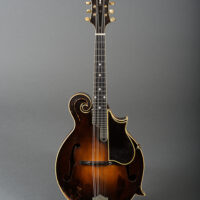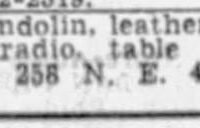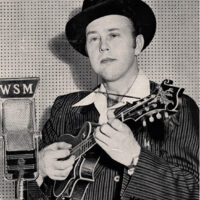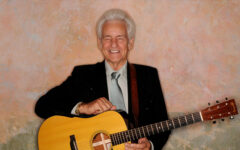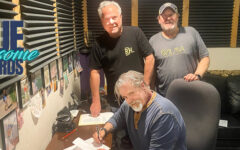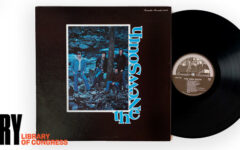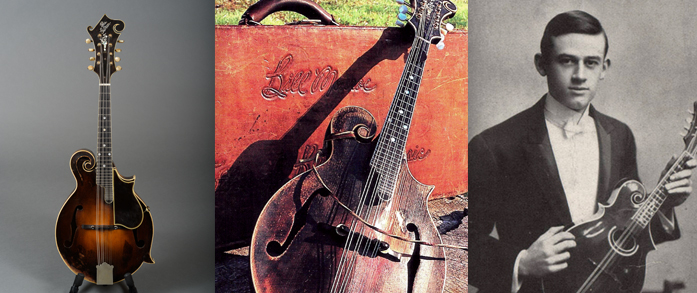
July 9, 2023, marked the 100th anniversary of the date when musician, instrument designer and sound engineer Lloyd Allayre Loar signed off as tested and approved, an iconic batch of Lloyd Loar Gibson F-5 mandolins.
The batch includes the most famous mandolin in the world; that with serial number 73987, purchased by Bill Monroe in a barber’s shop on January 11, 1945, most likely the one at The Liberty Hotel on 4th Street in Miami.
Monroe first recorded using his newly acquired mandolin on February 13, 1945, cutting Rocky Road Blues at the CBS Studio, Radio Station WBBM, Chicago, Illinois.
From the beginning, the goal of the original Gibson F-5 Master Model project was to create mandolin family instruments with the power and projection of concert violins.
A bowlback mandolin with f-holes was actually patented in 1898 by George W. Bostwick; Gibson foreman (from 1910 to 1926) Victor Kraske; and Rudolph Lorang. This differed from Orville Gibson’s design, which had a round or oval sound-hole.
Loar retained the f-hole design and, by removing bits of wood from sound bars and from the edges of the sound holes, he “tuned” the tops of the instrument and the sound chamber so that the instrument’s sound chamber was resonant to a particular note. Loar’s idea was to have a more complete set of these overtones with the carved top instruments.
Other features of the Loar F-5 mandolin included a longer neck, placing the bridge closer to the centre of the body; and the floating of the fingerboard over the top.
Also, Loar pioneered the use of the Virzi Tone Producer, a spruce disc suspended from the instrument top that acted as a supplemental soundboard.
Alan Bibey has played an F-5 – serial number 73729 – from this date for 27 years ….
“There were a lot signed and dated on July 9 because Lloyd Loar always toured during the summer with the Gibsonites. Kinda like the way we tour more during the summer.
The first number documented for July 9, 1923 is number 73719 and the last 74002.
As far as Loars in general [are concerned], the first known was signed June 1, 1922. The last known signed was December 1, 1924.”
Tom Isenhour elaborates ….
“When Bill Monroe found his fourth mandolin in January of 1945, hanging on a wall in a Miami barbershop, he had no idea it would become his main mandolin for the next 51 years. The mandolin was already 22 years old, so it was for sale at a used price of $150.00, or $125.00 off the price it sold for when new. A Gibson F-5 Master Model mandolin with serial number 73987 would become the most beloved, most played, and most recorded mandolin in the world. Some would equate this mandolin being as important to the sound of bluegrass music as was the Liberty Bell to the USA. After Monroe died in 1996 it would soon become known as “The Million Dollar Mandolin.” Signed by Gibson Company’s acoustic engineer, Lloyd Allayre Loar (1886-1943) on July 9, 1923, 73987 was one of about 50 mandolins signed that day. The first half of this batch would have the catalog spec binding of triple bound white/black/white pyralin on the top and back.
The second half of this batch would have the elusive and mysterious triple bound on the sides, also known as Side Bound. 73987 was part of the second half. It should be noted that none of the second half of the July 9 batch received the $15 optional and controversial Virzi Tone Producer. Today the famous Monroe mandolin is on display at the Country Music Hall of Fame in Nashville.
The other F-5 mandolins from this batch are in the possession of professional musicians, serious vintage instrument collectors, and weekend mandolin pickers. Only a few still remain in the hands of the original owner’s families. Bill Monroe would often boast in interviews, ‘I’ve sold a lot of mandolins for the Gibson Company down through the years.’ Monroe’s preference for the Gibson F5 mandolin has inspired 100s of other mandolin builders and independent luthiers around the world to build mandolins in the F5 style.
Monroe’s preference also influenced the price of these collectible Gibson mandolins from 1922 to 1924. A signed Loar F5 can command a current price from $100,000 to $175,000 depending on the condition. In the early 1990s Gibson Company sold 200 Monroe Signature model F5s, signed by Bill Monroe. In 2019 the Gibson Company introduced a limited edition, Monroe Hall of Fame replica distressed F-5 mandolin. The legend lives on.
Special recognition goes to Darryl Wolfe for his 50 plus years of dedication and devotion to preservation in the history of the Gibson F5 pre-war mandolins. Darryl oversees the Gibson F5 Journal Archives on the Mandolin Cafe website. There you can find detailed information and some photos about the known pre-war Gibson F5 mandolins. The photo below shows my 74000 on the left and Wolfe’s 73992 on the right.

Both were signed on July 9, 1923, and have the side binding. They both match the flame maple as seen in Monroe’s, which indicates they were cut from the same maple tree. I have played about 30 from this batch. I can say with honesty they were all great sounding and playing mandolins, but no two could be called identical. What sets Monroe’s famous July 9th F-5 Loar apart from the others is the million miles of music put into it. After 51 years of almost daily use, it served its purpose with grace, love and valor.
Happy 100th birthday to all the Gibson F-5 mandolins.”
Noted British mandolin maker Sim Daley provided an insight into the design features in modern-day mandolins….
“Almost all of the F-5 mandolins built today use the Lloyd Loar design in some form or another. Not just the body shape but the plate carving, tone bar construction, body dimensions, ‘F’ hole size and design etc.
However, Steven Gilchrist, who is probably considered to be the best builder, used an X braced design as opposed to the lateral tone bar configuration, slightly different plate graduations and body dimensions and a ‘S’ hole design as opposed to the ‘F’ hole design to that of Loar.
But basically, all modern F5 mandolin builders use more or less the same based designs of Loar.
I personally measured several Loar mandolins and took an average between them all. I used these measurements to build my Daley mandolins, but I did have a few techniques to ‘tweak’ my mandolins to achieve the results I got.”
So highly sought and coveted by bluegrass pickers are these Loar-signed mandolins that C.J. Lewandowski, of The Po’ Ramblin’ Boys, travelled 5,500 miles in December 2021, during the height of the pandemic, to Athens, Greece, to check on one.
In March 2022 he spoke to Fretboard Journal’s Jason Verlinde about his adventure …
Here C.J. tells the story of his Loar from Greece …..
In response to a question about how many Loar F-5s were built altogether, Tom Isenhour, provides this overview ..
“Estimates with missing numbers is close to 300. Still quite a few numbers missing. There are several out there; the F5 Journal has not gotten information on them. Some collectors do not want their information known. Some likely have been destroyed by fire, floods, other acts of God. A few still in original owners families and they are just sitting on them for whatever reason.
And 70281 signed on June 1, 1922, is considered the first official one even though it was actually a prototype. It did get sold with the others. 73719 is just the first of the July 9 batch. To get the 300 made from 1922 to 1924 you start with the 70281 and through 80416 signed on December 1, 1924.
July 9 was a big batch of 50 due to Loar being out on summer tours with the Gibson band. There were at least six luthiers at Gibson at this time to build the F5, hence the reason so many made in a short two-year time. They were the senior guys and started to retire after Loar left in late 1924. By the end of the WWII there were only two left that knew how to build the F5. The production of the F5 from 1925 to 1942 is less than 200.”
Lloyd Allayre Loar was born on January 9, 1886, at Cropsey, Illinois.
He worked for Gibson from 1919 to 1924. Aside from his F-5 mandolins, he is most famous for the L-5 guitar, H-5 mandola, and the K-5 mandocello.
Lloyd Loar died at his home in Chicago, Illinois on September 14, 1943. He was 57 years old.
Herschel’s Blues
Herschel Sizemore and Scott Napier
July 9, 1923, Lloyd Loar Gibson F-5 played by Marc MacGlashan
Southern Flavor by Bill Monroe
We are very grateful to Tom Isenhour and Tony Williamson for their considerable help in the writing of this article. Thank you for sharing your extensive knowledge on this subject.
Williamson’s Mandolin Central website provides a vast amount of information with associated documentation about Lloyd Loar, among many other mandolin-related topics.
Happy centennial to all the July 9 Loars!
